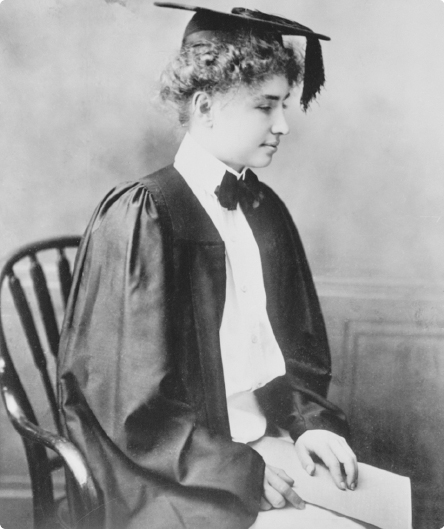Motives for Interpersonal Communication
At 19 months of age, Helen Keller fell ill with a severe fever that destroyed her sight and hearing (Dash, 2001). Helen had learned to speak quite early and had a substantial vocabulary (for a toddler), but when she stopped hearing she stopped trying to talk. In the years that followed, she created primitive messages through pulling, shoving, pinching, and shivering, but she had lost the knowledge of how to interpersonally communicate.

Helen Keller
© Bettmann/Corbis
With no ability to connect with others through communication, she became filled with hatred and an all-encompassing sense of isolation. She called the resulting sense of self “The Phantom.” The Phantom routinely flew into screaming tantrums that ceased only when utter exhaustion set in. In one of her early lessons with Annie Sullivan—the woman who eventually taught Helen how to communicate through hand signals—The Phantom became so enraged that she punched Annie in the mouth, knocking out one of her front teeth.
But when Annie finally taught Helen how to communicate through sign language, The Phantom was slain. As Helen explained years later, “It seemed that something of the mystery of communication was revealed to me . . . and suddenly I felt a misty consciousness as of something remembered—a thrill of returning thought.” Helen Keller went on to master sign language, Braille, and spoken language, and graduated magna cum laude from Radcliffe College.
As the Helen Keller story powerfully illustrates, when we communicate interpersonally, we connect with others—fulfilling a profound human need. We also achieve important personal and professional goals. When these outcomes are denied us, we lapse into isolation and loneliness or, worse yet, have a violent “Phantom” emerge from within, as did Helen Keller.